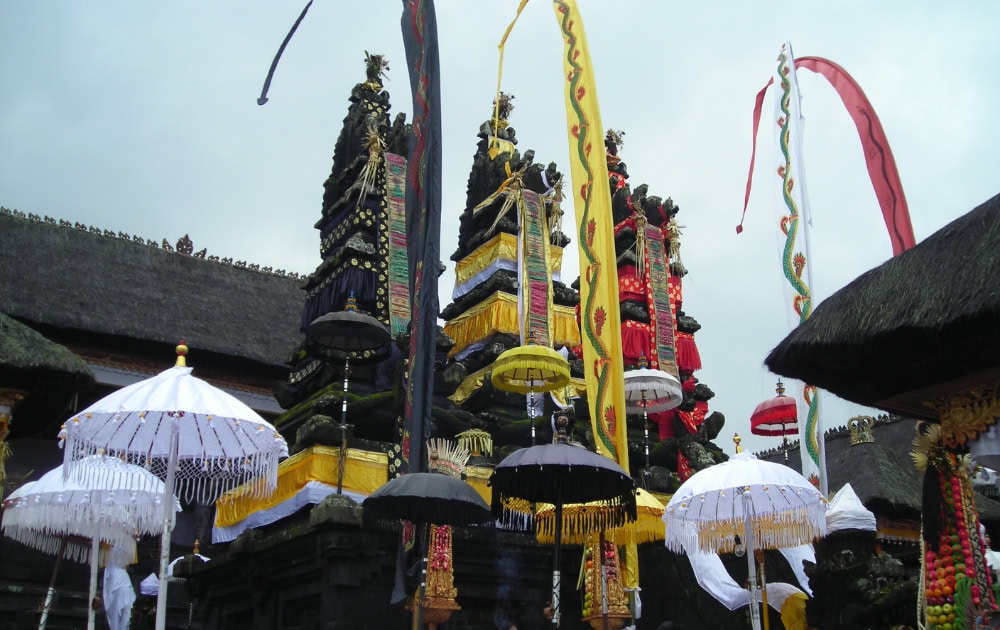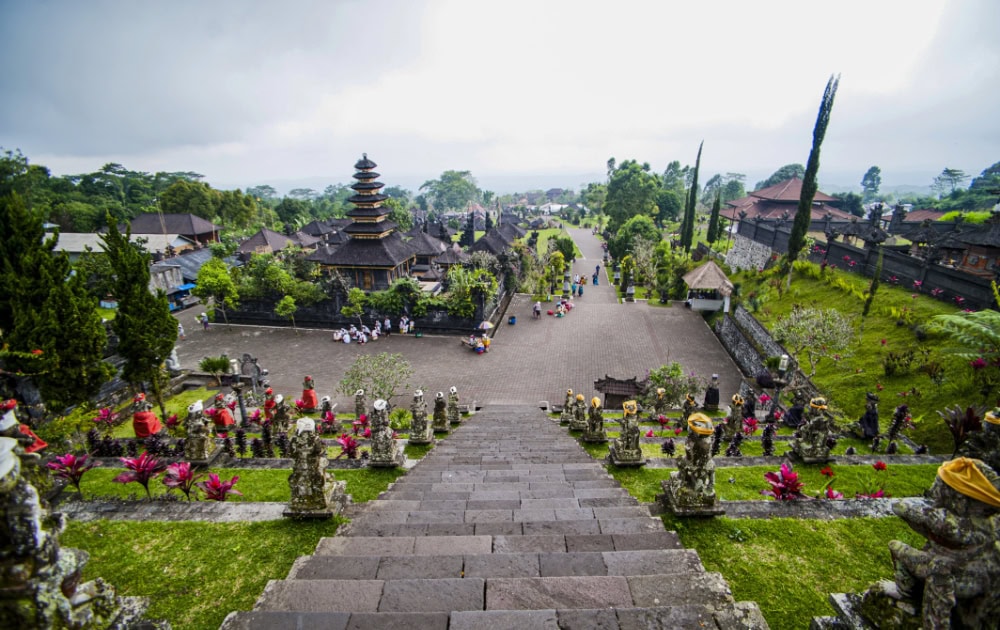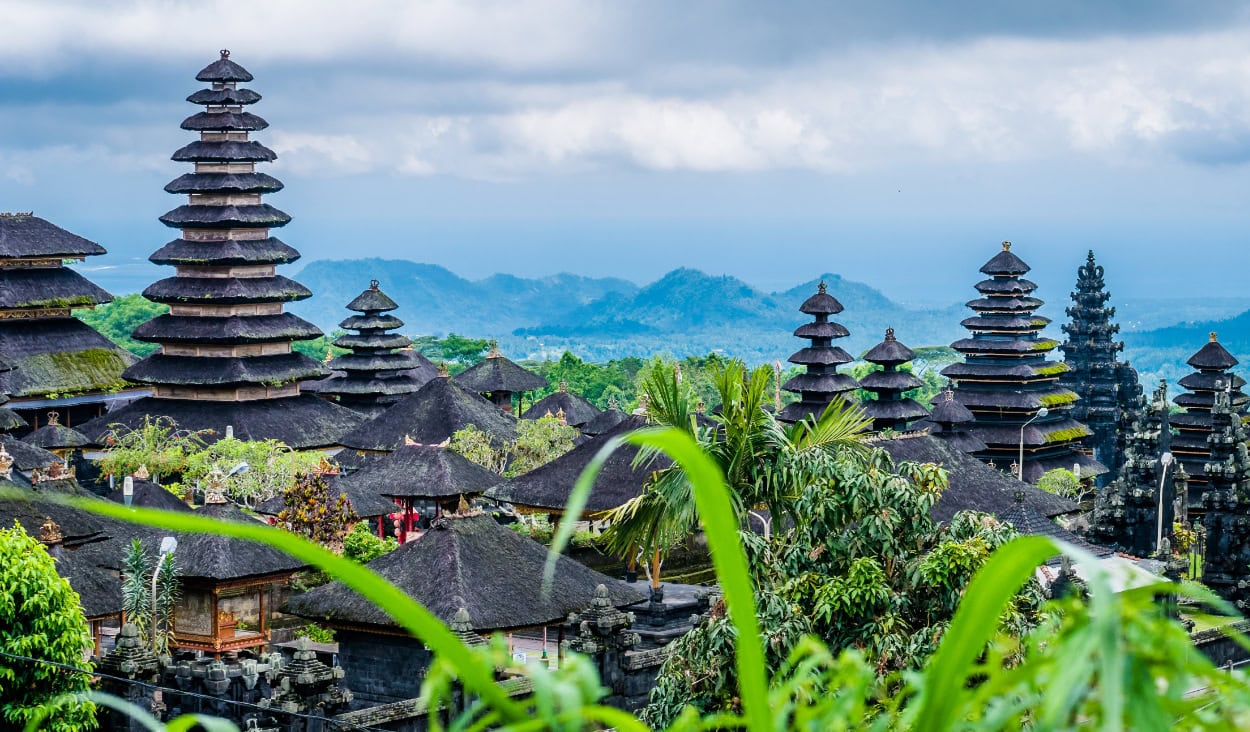Nestled majestically on the southwestern slopes of Mount Agung, Bali’s highest and most sacred volcano, lies Pura Besakih, the “Mother Temple” of Balinese Hinduism. This sprawling complex of over 86 temples is not only the largest and holiest temple on the island but also a profound testament to the spiritual devotion, architectural ingenuity, and rich cultural heritage of the Balinese people. Visiting Pura Besakih is a deeply immersive experience, offering a glimpse into the heart of Balinese spiritual life and its intricate connection to the natural world.
A History Etched in Sacred Stone
The origins of Pura Besakih are ancient, dating back to at least the 8th century, with some legends suggesting its foundations were laid even earlier. It is believed that the site was first used as a sacred place for ancestor worship before the arrival of Hinduism. With the spread of Hinduism in Bali, the complex gradually evolved into the grand temple it is today, becoming the central and most revered sanctuary for all Balinese Hindus.
Throughout its long history, Pura Besakih has endured numerous challenges, including volcanic eruptions from Mount Agung. Most notably, in 1963, a catastrophic eruption devastated much of the island, yet the main temple complex of Pura Penataran Agung miraculously remained largely intact, a phenomenon widely interpreted by the Balinese as a divine sign of its sacred power and protection.
Architectural Grandeur and Spiritual Significance

Pura Besakih is not a single temple but a vast complex of individual shrines and temples, built on six ascending terraces, each dedicated to different deities and aspects of Balinese Hinduism. The central and most important temple is Pura Penataran Agung, dedicated to the three main Hindu deities (Trimurti):
- Brahma (the Creator): Represented by the color red, facing south.
- Vishnu (the Preserver): Represented by the color black, facing north.
- Shiva (the Destroyer/Transformer): Represented by the color white, facing east.
The architecture of Pura Besakih is a stunning example of traditional Balinese design, characterized by multi-tiered roofs (meru), intricately carved stone gates (candi bentar and paduraksa), and numerous shrines adorned with sculptures of gods, demons, and mythical creatures. The layout of the complex follows the cosmic principles of the Balinese Hindu belief system, with each level and temple holding specific spiritual significance.
Pilgrims ascend the terraced courtyards, passing through various gates, each step symbolizing a journey towards spiritual enlightenment. The highest and most sacred shrines are reserved for the most important ceremonies, offering breathtaking views of the surrounding landscape and the distant ocean.
Rituals and Ceremonies: The Pulse of the Mother Temple
Pura Besakih is the focal point for countless religious ceremonies and festivals throughout the Balinese calendar. It is here that the most significant and elaborate rituals are performed, drawing pilgrims from all corners of the island. These ceremonies are vibrant spectacles of devotion, featuring colorful offerings, traditional music, and dancers in elaborate costumes.
One of the grandest rituals, Eka Dasa Rudra, is held only once every 100 years, a massive purification ceremony aimed at restoring cosmic balance to the universe. Other important ceremonies, such as Odalan (temple anniversary festivals), are held regularly, offering visitors a chance to witness the profound spiritual life of the Balinese.
Visiting Pura Besakih: Tips for Travelers
For travelers, a visit to Pura Besakih is an unforgettable cultural and spiritual experience. To make the most of your visit and show respect for this sacred site, consider the following tips:
- Dress Code: As a holy site, modest dress is required. Both men and women must wear a sarong and a sash, which can be rented or purchased at the entrance. Shoulders and knees should be covered.
- Respectful Behavior: Maintain a respectful demeanor throughout your visit. Avoid loud conversations, pointing with your feet, or climbing on shrines. During ceremonies, be mindful not to obstruct worshippers or walk in front of prayers.
- Guides: While not mandatory, hiring a local guide can greatly enhance your understanding of the temple’s history, architecture, and spiritual significance. Be sure to agree on a price beforehand.
- Best Time to Visit: Early morning (before 9 AM) or late afternoon (after 4 PM) are ideal to avoid crowds and the midday heat. These times also offer beautiful light for photography.
- Offerings: You may see locals carrying elaborate offerings. It’s a beautiful part of their devotion; observe respectfully.
- Footwear: You will be walking on uneven surfaces and steps, so comfortable footwear is recommended.
- Beware of Scams: Unfortunately, some unofficial guides or vendors may try to overcharge. Stick to official ticket counters and reputable guides.
A Symbol of Resilience and Faith

Pura Besakih stands not only as a monument to Balinese artistry and spiritual depth but also as a powerful symbol of resilience. Its survival through natural disasters and its continued role as the spiritual heart of Bali underscore the unwavering faith and determination of its people. It is a place where the earthly and the divine converge, where ancient traditions are kept alive, and where the spirit of Bali truly soars.
For those seeking to understand the profound spiritual essence of the Island of the Gods, a pilgrimage to Pura Besakih is an essential journey, offering an experience that is both awe-inspiring and deeply moving.

